You may see road lines every day on different roads. For example, on highways, city streets, and sharp turns. But do you really know what they mean?
As a new driver, civil engineer or a safety officer, you need to know about road lines & roadway markings. These lines actually guide, warn and protect you. In today’s article, we will tell you all about road lines and meanings, their types and road line rules.
Roadway Markings Definition
Roadway markings are the lines, arrows or symbols that are painted on roads to guide you and control traffic. With the help of these road lines, you can understand where to drive, when you should stop and how you can safely cross/turn the road. They enhance safety for everyone on the road, especially for drivers, cyclists and pedestrians.
Moreover, roadway markings are used to separate traffic when it is going in opposite directions. Generally, you will notice them in the form of white/yellow lines, arrows, crosswalks and sometimes words like “STOP” or “SLOW.” Hence, every time you are on the road, these lines give you clear directions to avoid mistakes.
Road Line Meanings: 20 Road Markings
If you learn the meaning of each road line, you can drive smarter and can avoid traffic rule violations.
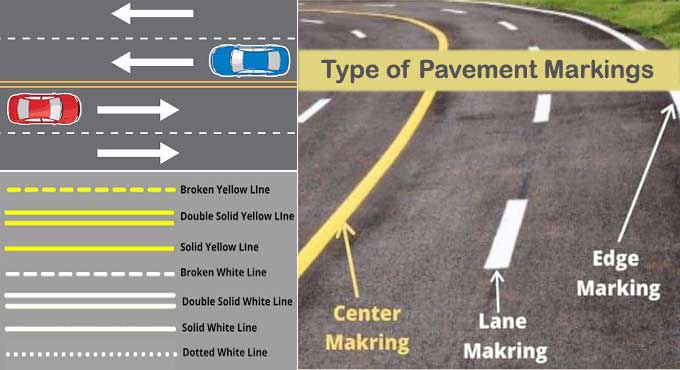
1. Zig Zag Lines Road
Zig zag lines are usually painted near pedestrian crossings such as zebra crossings.These wavy white and yellow lines regulate that you can not park your car, stop and can’t overtake your vehicles in that area.
Basically, zig zag lines are there to keep the crossing clear, so you can notice people who are trying to walk across the road.
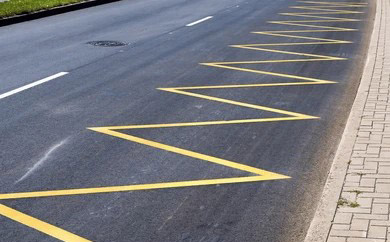
2. Side Solid Lines
Side solid lines are long & continuous white/yellow lines which are marked along the outer edge of the road but also used inside the roads. These lines help you to stay within the safe driving area and indicate where the road ends.
You can only cross them in urgent situations, like blocked roads, to avoid obstacles and emergencies. These lines are especially helpful for you at night and in bad weather, when you can’t easily see road edges.
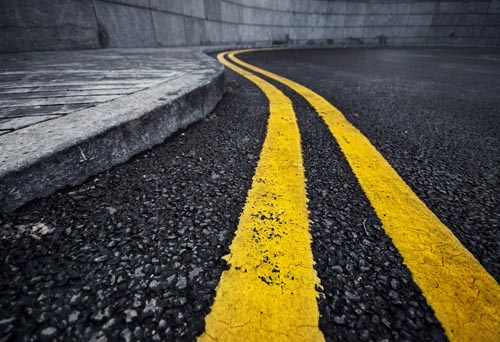
3. Diamond Symbols/HOV Lanes
The diamond symbol on the road symbolizes that the path is for High-Occupancy Vehicles (carrying two or more people) only. For example, carpools, buses, and taxis have to follow diamond symbol indications. You can identify them by a white diamond shape marked on the road.
The main purpose of this symbol is to reduce traffic and share rides. If you drive alone in an HOV lane without permission, you can be fined or ticketed.
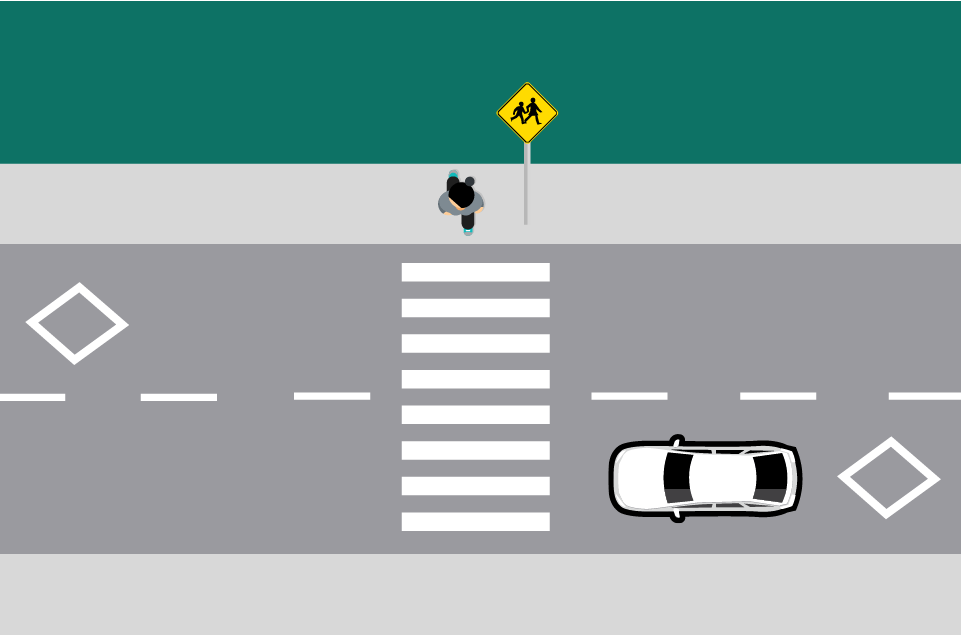
4. Dividing Lines or Center Line
Dividing lines are used to separate roads where traffic moves in opposite directions. Generally, these lines are drawn in the center of two-way roads. Road centerlines guide you to stay on your right side and prevent crashes with other cars.
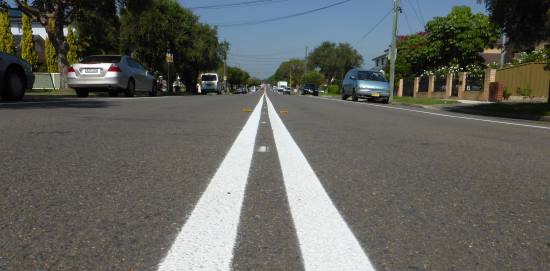
5. Hazard Warning Line
Hazard warning lines are a type of broken line that looks longer than normal dashed lines. You can see them before curves, intersections and other dangerous parts of the road.
These hazard warning road lines warn you to slow down your vehicles and drive carefully because something risky is ahead.
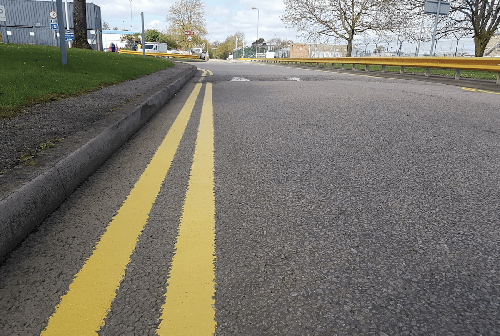
6. Ladder Lane Marking
Ladder lane markings are also known as striped side markings. These lines are a set of thick white stripes that are painted near the edge of the road. With their ladder-shaped design, they are mainly used near junctions, pedestrian areas, and where the roads are narrow.
Because of changing road conditions, they tell you that you should reduce your vehicle’s speed and stay alert as well. Moreover, these lines will be helpful for you in crowded and dangerous roadways (sharp turns).
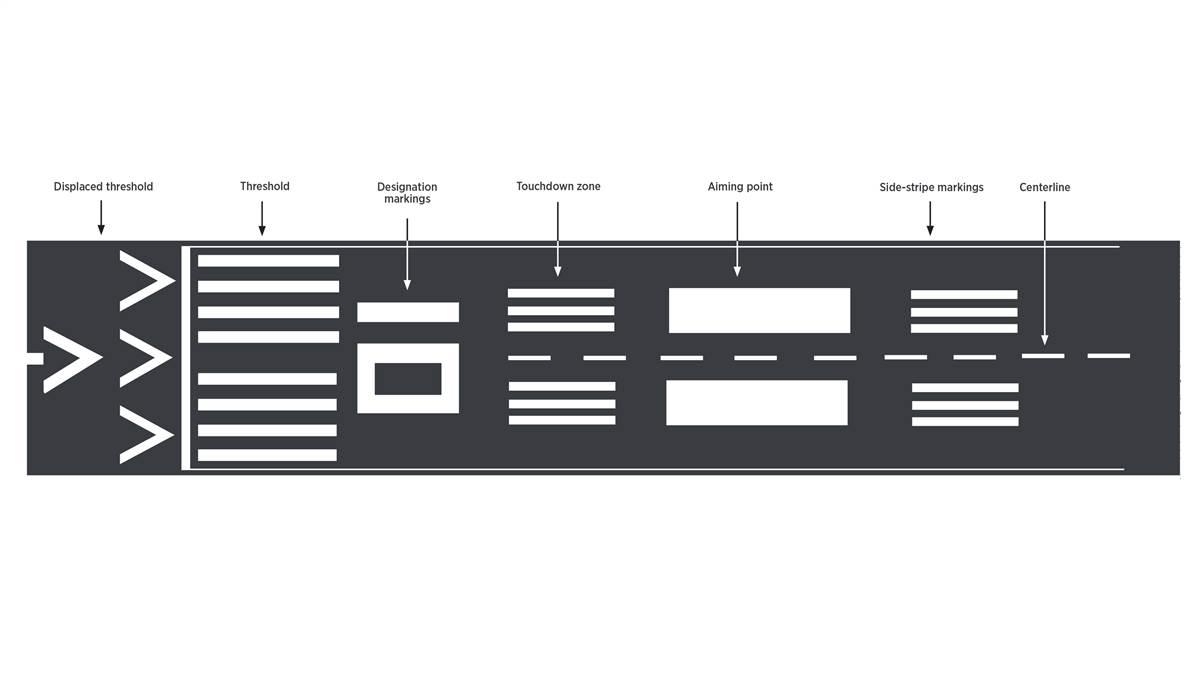
7. Solid Horizontal
A solid horizontal line is a thick and white line that is painted straight across the whole road (near stop signs or traffic signals). Whenever you notice this line, it means you have to stop your vehicle completely before the line. You should wait until it’s safe to drive or the signal turns green.
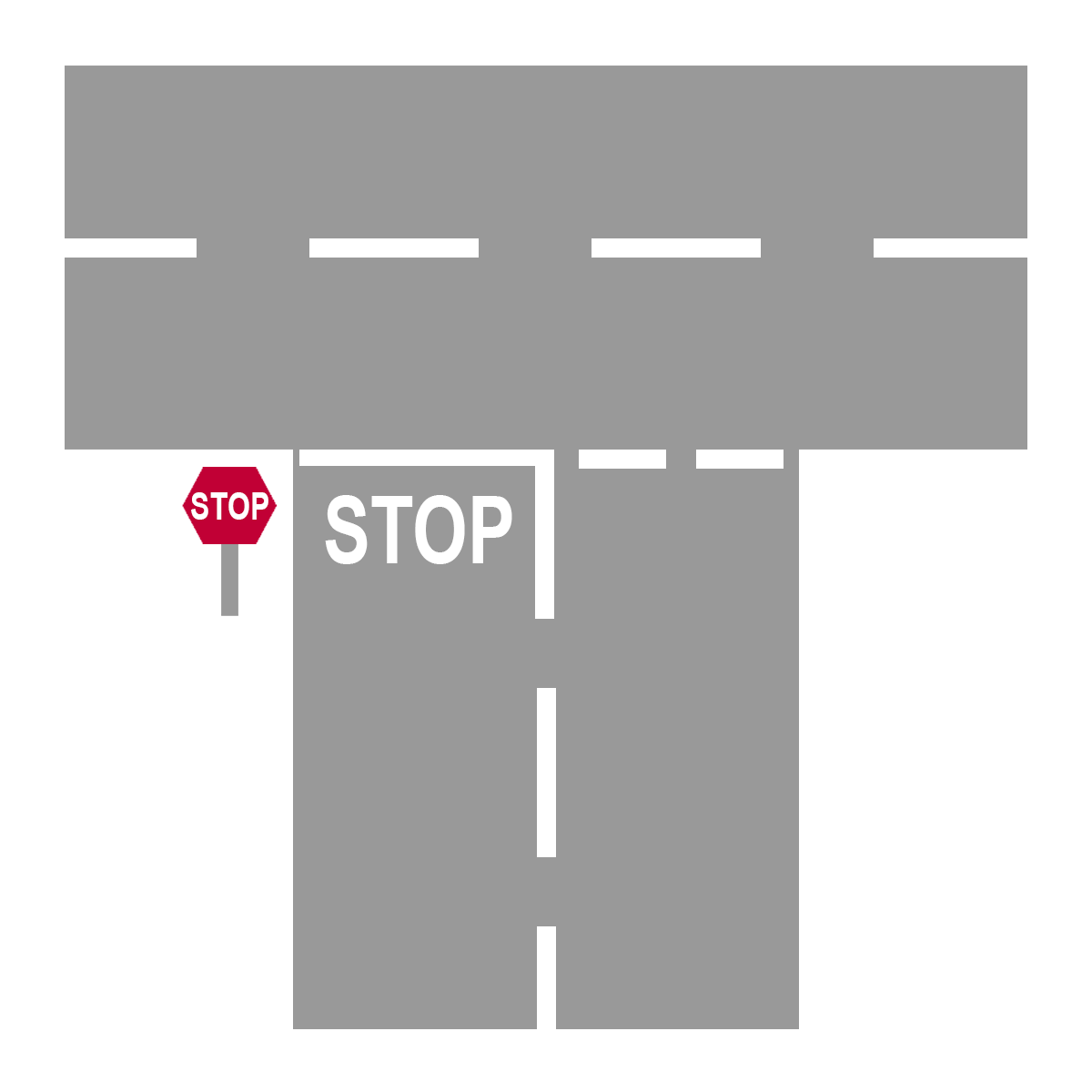
8. Broken/Dotted and Solid Line
Actually, in this case, you see two lines painted side by side on the road. One is solid and the other is broken or dotted. These lines warn you that all cars are going in the same direction.
You can move to another lane and overtake another vehicle only if it’s safe. For example, if the broken line is on your side of the road, you are allowed to overtake. However, if the solid line is on your side, you should not cross it and never try to pass other vehicles.

9. Striped Lines
Striped lines are a group of diagonal white stripes that are marked on the highways. They are generally placed in zones where you should not drive, such as near road merges, traffic islands and between lanes. You should avoid these places for driving because they can be harmful to you.
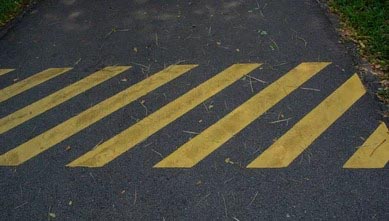
10. Double Dotted Line
If we talk about double dotted lines on the road, these are designed as two broken lines side by side in the center of the road. These markings are important at intersections and roundabouts (roads cross each other). Basically, it indicates to you that you must provide space for other vehicles so that they can pass first with safety.
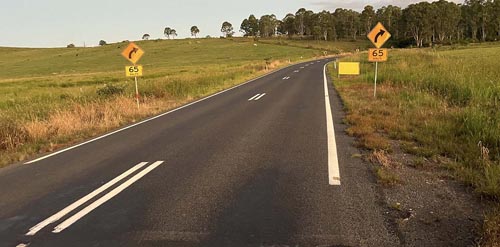
11. Yellow Box Junction
A yellow box junction is a big yellow square that looks like criss-cross lines painted on the road. You usually find them where busy and more crowded roads meet. These lines have a simple rule: don’t stop inside the box.
You can only enter the box if your path is clear. But if you stop in the yellow box and block other traffic, you may face punishment/fines.

12. Painted Traffic Islands
Painted traffic islands are flat shapes (white or yellow lines) that are marked on the highways (usually in triangle or rectangle form). You will often see them at turns, roundabouts and near lane splits.
You should never try to drive over them unless you have an emergency. They also help you to create space, reduce confusion and make roads safer for everyone. So, when you see a painted island, you are only allowed to go around it.

13. Double Solid Line
A double solid line shows two solid lines marked side by side in the center of the road. These lines indicate you can’t cross other vehicles and there is no permission to change your lanes too. Double solid lines are used on busy roads, hills, and curves where it’s unsafe for you to pass.
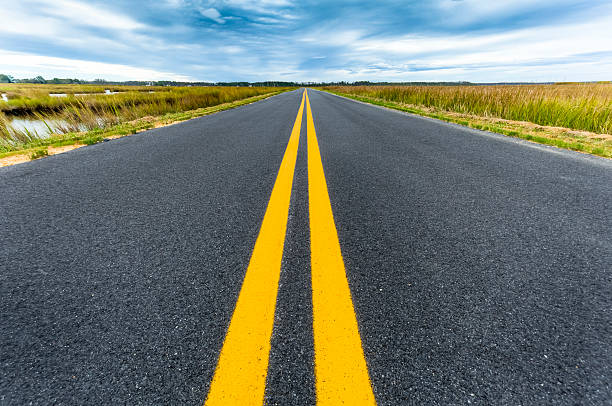
14. Edge of Pavement Lines
The edge of pavement lines are strong white/yellow lines that tell you where the road ends and the side begins. These lines make the road more visible to you at night.
You can easily identify where the footpath begins and which areas you should avoid while driving. Plus, you can cross them only when it’s really needed, such as if you want to avoid an obstacle.
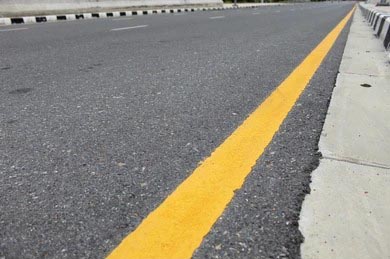
15. Pavement Markings
Pavement markings are all the lines, shapes and symbols that you see on the road. These markings are used to help you drive safely. You find them every day like stop lines, arrows, crosswalks and lane dividers.
They basically tell you where you should stop, which way is right to go and what to avoid.
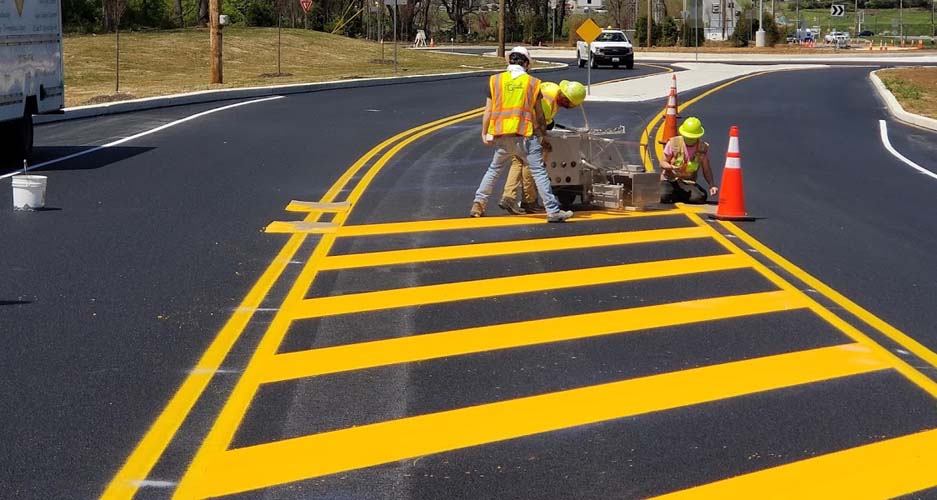
16. Wide Lines on Road
Wide lines are more thicker and bolder than regular road lines. These lines are marked on the road to inform you about something important. Generally, it provides you direction about a stop line and gives a warning to slow down your vehicles.
You might see them at traffic signals, near pedestrian crossings and where roads have sharp curves.
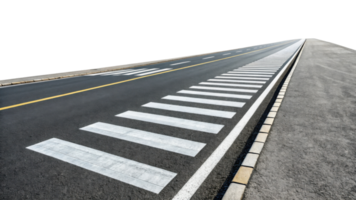
17. Merge Arrows
Merge arrows are white arrows drawn on the road to show you that your driving space has ended now and you need to join another part of the road. You often see them where two roads meet and at highway entry points.
So, whenever you notice a merge arrow, then you need to check around, use your signal & carefully move into the next road section. As a result, you get rid of sudden stops and keep the flow of traffic safe.
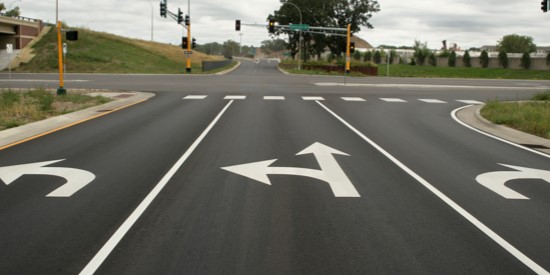
18. Railroad Crossing Markings
They are special symbols on the road. After watching them, you get the indication that the train track is ahead. Railroad crossing markings look like a big white “X” shape with the letters “RR” drawn before the tracks.
You should reduce the speed of your car, look for trains, and completely stop if required. These markings are very helpful for you when there are no lights and gates available near the train track.
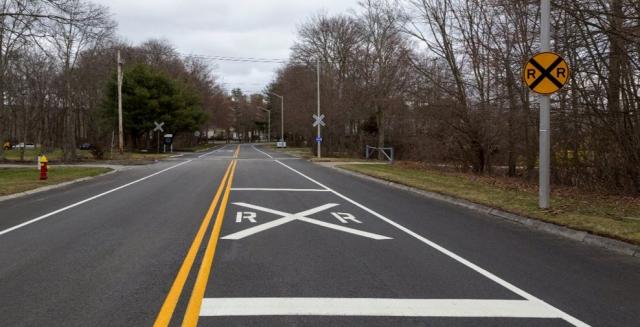
19. Give Way Lines
Well, you can easily recognize these lines as white triangles painted on the road. These lines tell you to slow down your cars and let other vehicles pass first. Give way lines have a major role in controlling traffic flow at intersections & roundabouts.
In these zones, you must look both ways and wait if needed and also give space to traffic already on the main road.
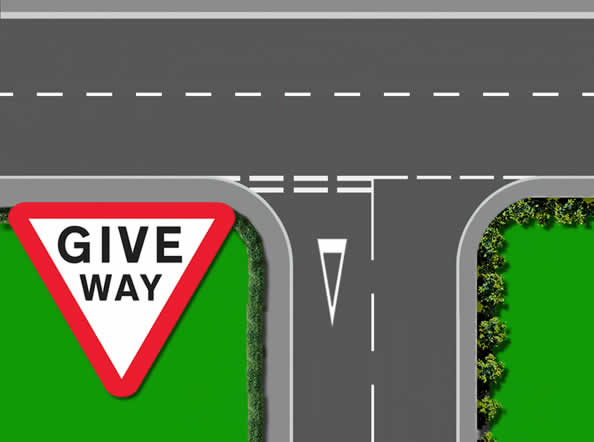
20. Stop Lines on Road
Stop lines on roads are thick white lines that show the exact spot where you can park your vehicles and stop completely on the roads. These types of lines are usually used just before a crosswalk, junction and railway crossing. So, whenever you see a stop line on the road, you need to make sure that you stop right before it and wait for your turn to move.

What Do White Lines Mean on the Road?
The Road Authority and Municipal Traffic Departments used white lines on the road to guide you and keep traffic in order. They show where you can drive, stop and change paths. These lines have different patterns and are marked in the middle of the road, along the edges & near crossings.

Double White Lines on Road: Two white lines that are drawn side by side in the center of the road. These lines are used on roads which have sharp turns, hills & poor visibility.
White Dashed Lines
- Short broken/dashed white lines are marked in the middle and between lanes.
- These lines show that you can pass other vehicles if there is no danger.
- Generally used on multi-lane roads and highways.
- You will also see them where all traffic moves in the same direction.
- If you want to cross, then you have to check for traffic flow around you.
Single Broken White Lines
- These are single dashed white lines that are painted in the center of the road.
- They indicate that the road has two-way traffic.
- You are only allowed to cross & overtake if it’s safe to do otherwise don’t overtake.
- Mostly used in areas with good visibility and clear roads (especially in light traffic areas).
Double Solid White Lines
Double solid white lines mean that you should not change lanes at that spot. These lines are drawn to keep traffic in order and to stop you from switching your sides where it’s not safe (like on sharp turns & busy roads).
Double Yellow Line
When you see double yellow lines in the middle of the road, it means that traffic goes both ways. You are not allowed to cross/overtake unless it is legal. So, if you spot double yellow lines, you should stay on your side and drive with caution.
Solid Yellow Line on Road
- It is marked with a yellow line in the center of the road.
- Also means two-way traffic, but rules may be less strict.
- You should not cross the road, but have to do so carefully if the road is clear and local rules allow you too.
- These solid yellow lines are usually found on less busy roads.
Broken Yellow Line on the Road Means
- Broken yellow lines are dashed lines that are painted in the center of the highways.
- These lines convey the message that traffic moves in both directions.
- In these zones, you have to check the road if it is clear and then pass through it.
- Yellow dashed lines are there to provide you with clear visibility and help you to stay safe while driving your vehicles.
Double Red Lines on Road
Red lines on the road are painted to show you the places where you are not allowed to stop, park and wait during certain times of the day. You will generally find these lines in busy cities and near important buildings where traffic must keep moving.
- This rule is active 24/7 (day and night) and you have to follow this rule.
- You can’t load and unload anything on double road lines.
- You may only stop if there is a special sign indicating that allows certain vehicles (like buses or taxis) to pass.
Blue Lines on Road
Blue lines on the road usually show you special parking zones where you can park your car. Moreover, these lines are used to guide you about which areas are disabled for parking and which permit only parking.
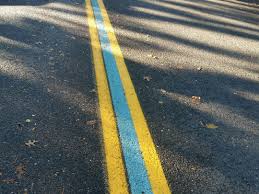
In some countries, blue lines may also point out paid parking zones, where you need to buy a ticket & pay by phone.
Double Blue Lines on Road
- Double blue lines are used in private areas, enforced parking zones and near government buildings.
- When you notice these lines on the road, don’t stop unless you are 100% sure you are allowed.
- Generally, this type of area is reserved for those vehicles that truly need it.
Green Road Markings
Green road markings are commonly used on roads to highlight some special zones. It shows you the areas that are only allowed for bicycles, buses and eco-friendly vehicles. They help both drivers and riders to make sure everyone stays in the right space.
Sometimes, bike symbols/arrows are also drawn inside them to make the message even clearer for you.
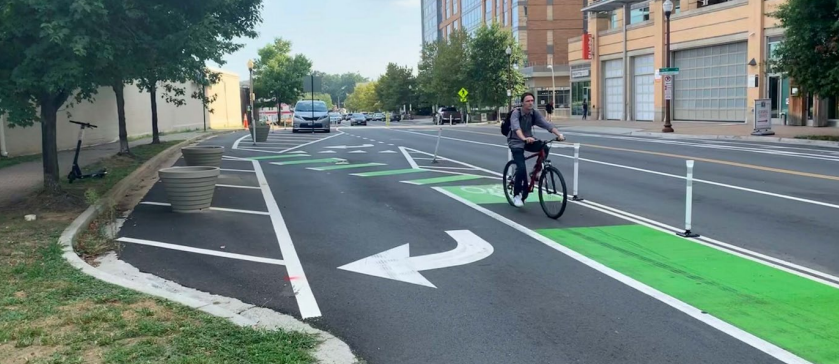
Black Lines on Road
If we talk about black lines, these types of lines are less used as compared to other road lines (white & red). Basically, black road lines are painted to cover old road markings that are no longer in use.
Their main job is to avoid confusion for drivers and hide unwanted/outdated lines, too. Sometimes, they are also marked areas with heated roads and recent repairs.
Conclusion
In the end, we can say that road lines are simple ways through which you can organize traffic, guide drivers, and reduce road accidents. Now it is your responsibility to understand and follow the rules properly. Otherwise, you may face some legal trouble and fines from the authorities, etc.


-80x69.png)

